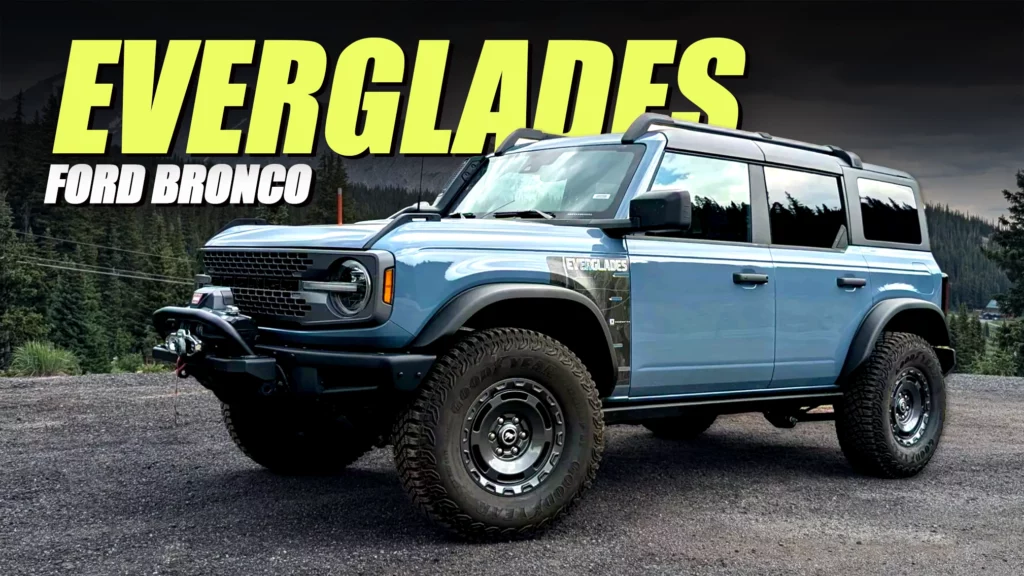Our pets can say a lot about who we are as a person. Take dogs as just one very clear example of that. Why does one individual have a Great Dane while another prefers a pup that can fit in a purse? Often, the breed they have connects to something intrinsic inside of them.
Our cars can indicate a lot about who we are as well. They can tell others how we view ourselves, what types of things we value, and even about aspirations we might have. After over a week of piloting the Ford Bronco around Colorado, we’ve figured out something about it: it’s an absolute beast and it deserves an owner that’s every bit as hardcore as it is.
Read: 2025 Explorer, Bronco Sport, Maverick Delayed As Ford Wants To Prevent Quality Issues And Recalls
On the other hand, owning one and not using it to its full potential would be akin to keeping an Irish Wolfhound in an apartment for its entire life. Sure, it looks cool, and it’ll make a statement to those around, but neither the dog nor the owner is best served.
QUICK FACTS
Powertrain
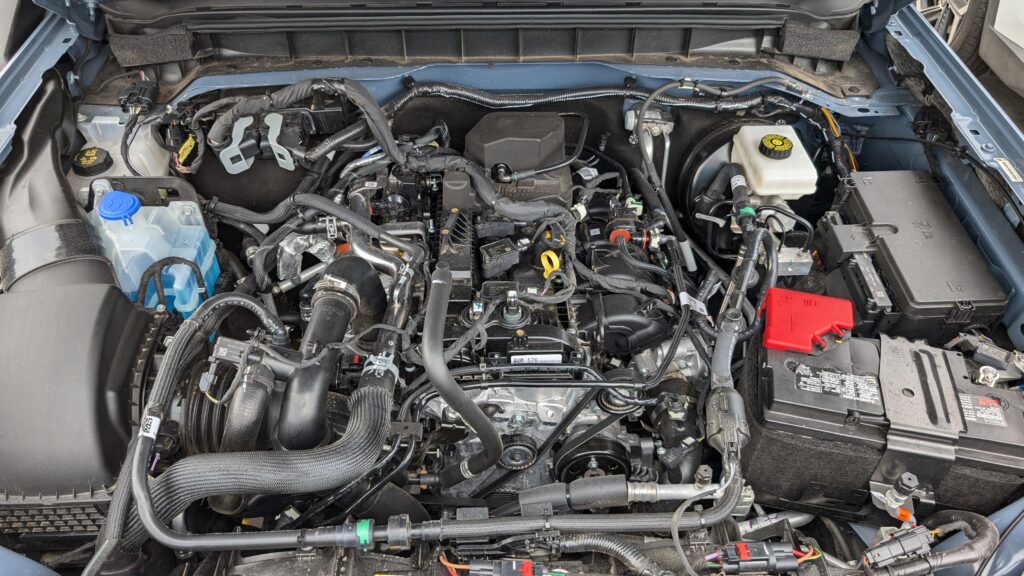
Our test vehicle was a Bronco Everglades trim. Ford offers three different engines in the Bronco lineup but the Everglades is only available with the lowliest of the trio. That means it comes standard with a 2.3-liter turbocharged four-cylinder that makes 300 horsepower and 325 lb-ft of torque. It sends that power to a ten-speed automatic gearbox and then onto all four wheels.
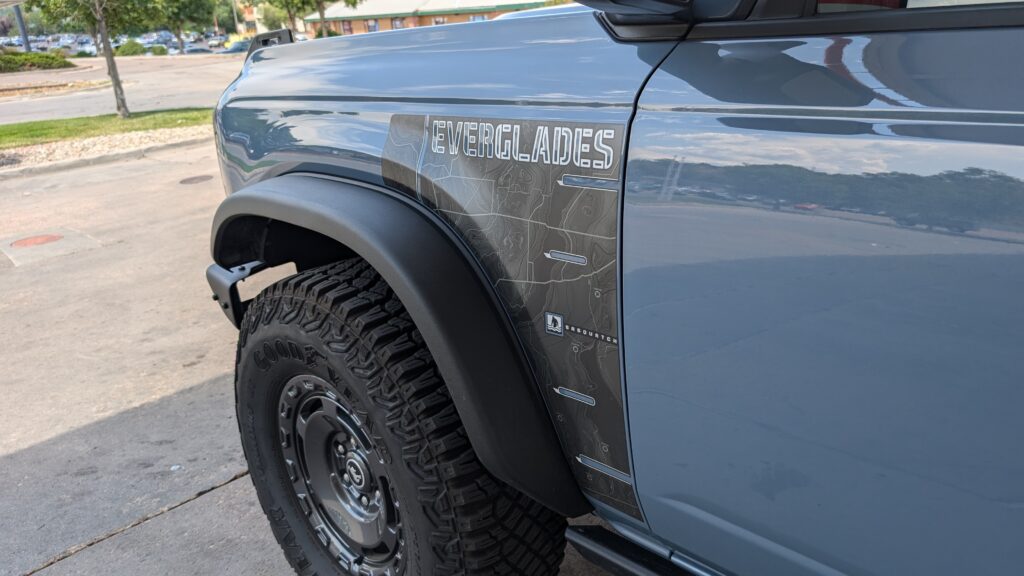
According to the EPA it’ll get up to 18 mpg in the city and 17 mpg on the highway. Our example had an MSRP of $58,770. That’s almost as much as the Bronco Wildtrak which starts at $60,225. Notably, the Wildtrak comes with Ford’s 2.7-liter engine but loses the snorkel, the Warn winch, and the marine-grade upholstery that our test SUV had.
Interior
Photos Stephen Rivers / Carscoops
The Everglades trim is especially focused on real off-road usability. The aforementioned marine-grade upholstery is an excellent indication of that. It’s soft and supple but very clearly an intentional choice meant to outlast just about anything one might throw at this beast.
The dash, door cards, and switchgear is just as clearly focused on rugged toughness. There are no soft-touch materials akin to the ones you’d find in most other $58,000 SUVs. Instead, hard plastics and tough foam do most of the work in the cabin. That might be a tough pill to swallow for some but we imagine they’re the same folks who wouldn’t use this SUV the way it’s intended.
More: Which Small Cars Would Win You Over?
The choices are very thoughtfully geared toward those who will take this SUV off-road. The grab handles are substantial and well-placed. The switchgear features larger buttons and knobs that even a gloved hand can use. The door cards leverage netting instead of a plastic recess for gear. That makes it easy to chuck anything in there including oversized water bottles.
The front seats are comfortable and supportive. They’re incredibly thick too so they soak up a lot of the bumps and bruises in the road or trail. As a taller driver, I struggled to see traffic lights easily when I was first in line at an intersection but that’s somewhat typical. Either way, I would’ve preferred an available lower seating position in the Bronco.
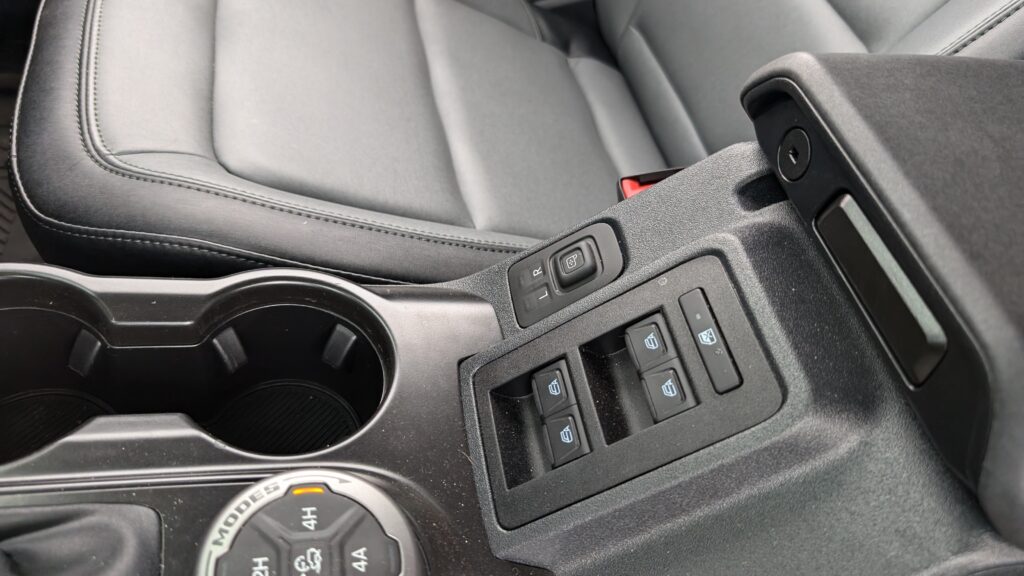
At the same time, there are a few issues worthy of mention. The center-positioned window switches were still a bit weird to use even after a week in this SUV. They’re pointed at the windshield too so it’s easy to grab the wrong switch because you’re not really capable of looking at them while you drive. The same goes for the mirror adjustment switch. These are tiny gripes and they exist because Ford wanted owners to have the freedom of still having these features even when the doors are removed.
Again, those who plan to use this SUV in such a way will love the thoughtfulness here. Those who plan to use this like a daily-driven commuter car in the city probably won’t love that compromise but they’d surely get used to it over time.
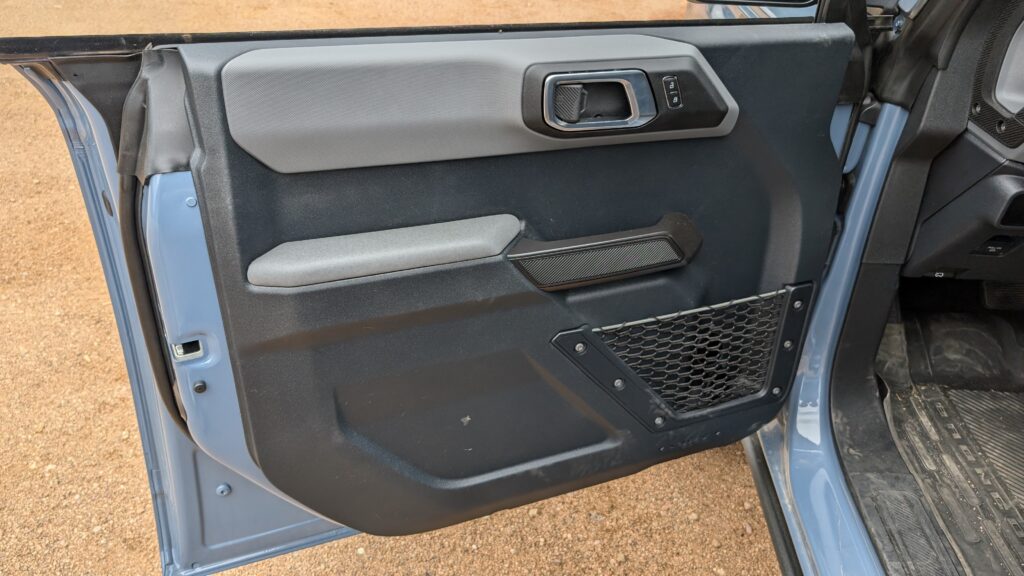
What one might not get used to is the wind noise inside of the Bronco. Those who love a serene and peaceful ride won’t really get it here. Despite having a sound-deadening headliner, the wind making its way through the panels was audible immediately above 35 mph (56 km/h). Those who have the single-piece hard top might have a different experience but I somehow doubt it’s much better.
I think having the freedom to remove the roof in sections, as was the case with our test car, is probably the better of the two options for those who like driving topless. There are also occasional unexpected rock pops that happen but we’ll come back to that.
Behind the second row, one finds 36 cubic feet of cargo space. It was more than enough to easily pile in all of the gear that two or three might need for a long day or two on the trails. At the same time, those who need to transport larger items will likely need to lower the rear seats, which limits seating to just two.
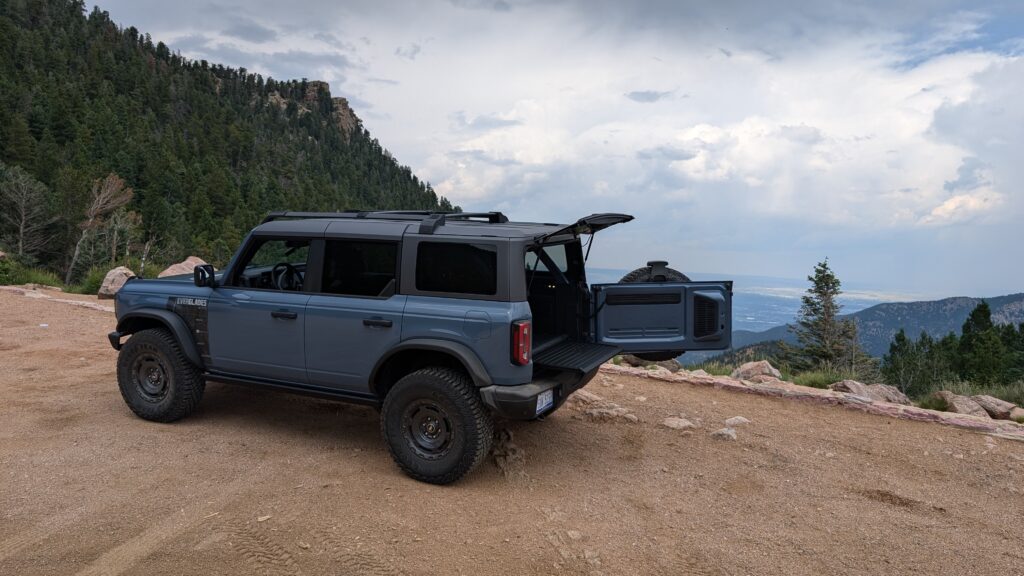
Under the rear storage space is a cool pull-out camp/tailgate seat which was really useful during the week. Thanks to the temperate weather of Colorado several of us found times where we’d sit outside and use the seat with the rear of the Bronco wide open.
Let’s end on one small annoyance though. The rear window won’t open until the door is about 90 degrees open. That makes access to the rear of the Bronco something that doesn’t happen as quickly as one might want. Toyota really nailed it with the roll-down window in the 4Runner.
Tech
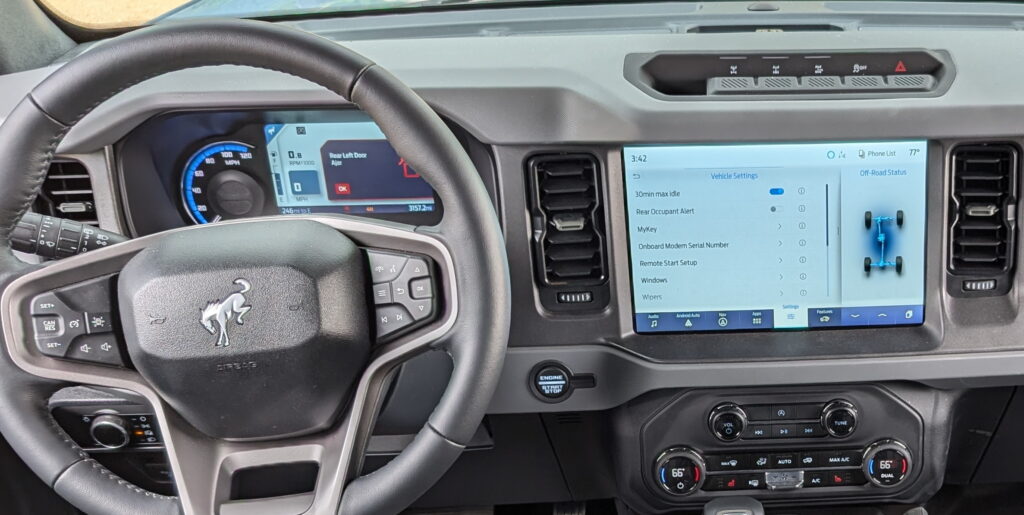
Ford offers the entire Bronco lineup with a 12-inch infotainment system. In our use, it was quick, intuitive, and logically laid out. The driver information screen was good too though not as easy to navigate. Ford offers several driver modes in the Everglades including Sand/Snow, Rock Crawl, Mud/Ruts, and more.
At the same time, the Everglades doesn’t come with the trail cams that the Badlands trim has and we wish it did. Understandably, Ford expects Everglades owners to be in the water from time to time so perhaps that’s why the trail cams don’t come standard. Still, they would’ve been very helpful on some of the terrain where we took the Bronco.
In terms of tech that adds to comfort, Ford provides seven speakers, two of which are situated in the roof bars. At times, that led rear passengers to ask me to turn the volume down when it seemed ample in the front. Thankfully, one can simply adjust the balance from front to rear to fix this potential niggle.
Drive Impressions
Photos Stephen Rivers / Carscoops
Piloting the Bronco is mostly a pleasure in a place like Colorado. There are several trails where it shines brightly. For example, we took it deep into the Rocky Mountains back behind Cheyenne and Pikes Peak, and then up into the ski region of Copper, Breckenridge, and Frisco. No matter what sort of ruts, mud, sand, or rock beds we threw at it, this Ford never blinked. Honestly, at times, it felt like bringing an F-22 Raptor to a biplane fight.
At one stage, an elderly lady drove by on one trail in a totally stock Subaru Outback from about 10 years ago. We immediately went to find somewhere she couldn’t follow. The Bronco still had zero issues whatsoever. On-demand electronically locking differentials provided additional grip and confidence from behind the wheel. This SUV isn’t too far from an actual Irish Wolfhound in reality; it’s rugged, extremely capable, and kinda feels like a best friend deep in the wilderness.
Let’s circle back to the rock pops mentioned in our interior segment. Once one gets back to the pavement, the bumps of the trail go away but reminders of it sure don’t. At seemingly random points loud pops and bangs interrupt the peace in the cabin. Those sounds come from the seemingly unending allotment of stones and rocks picked up by the tires. Our test car came with Goodyear Territory MT rubber. Maybe this issue is exclusive to them but again, I doubt it.
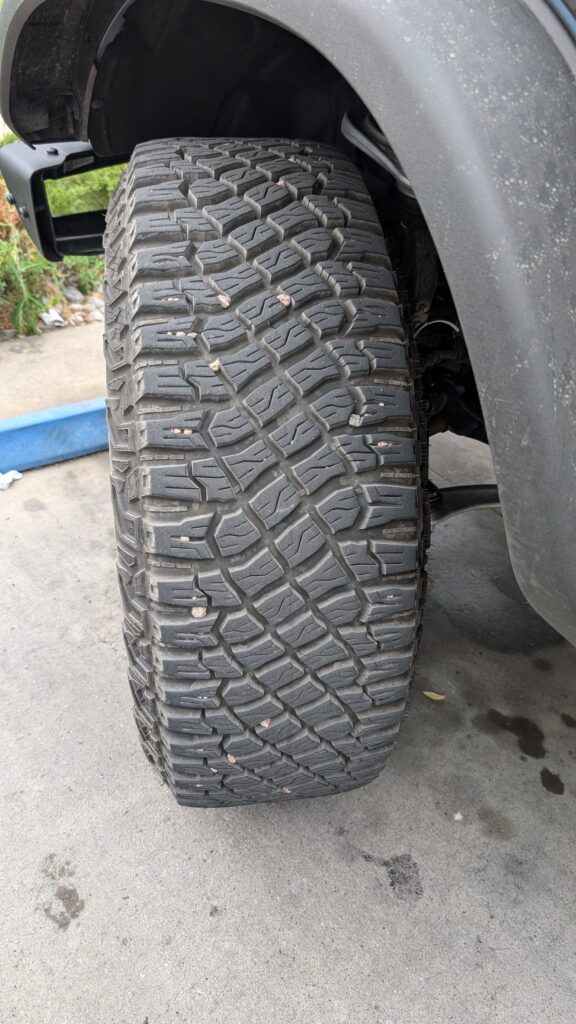
Despite that, the Bronco isn’t bad to drive on the road. Don’t get us wrong, it’s not sharp, it’s not wildly engaging, and it’s not what anyone should pick for a long highway-constrained road trip. It sort of wallows about on pavement but is easy to point and direct. The steering is especially communicative at low speeds which is a big positive. Coming at this SUV with a more jovial attitude really pays off.
It’s kinda fun to poke around in traffic with and the four-cylinder sounds better than any other I’ve heard. Some of that might come down to the snorkel and having the induction sound so close high and exposed. Either way, at full throttle, one classic Bronco builder told me it sounded like a V8. It kinda drinks fuel like a V8 too though. I managed 17.3 mpg in mixed driving on the highway, in town, and off-road.
Verdict
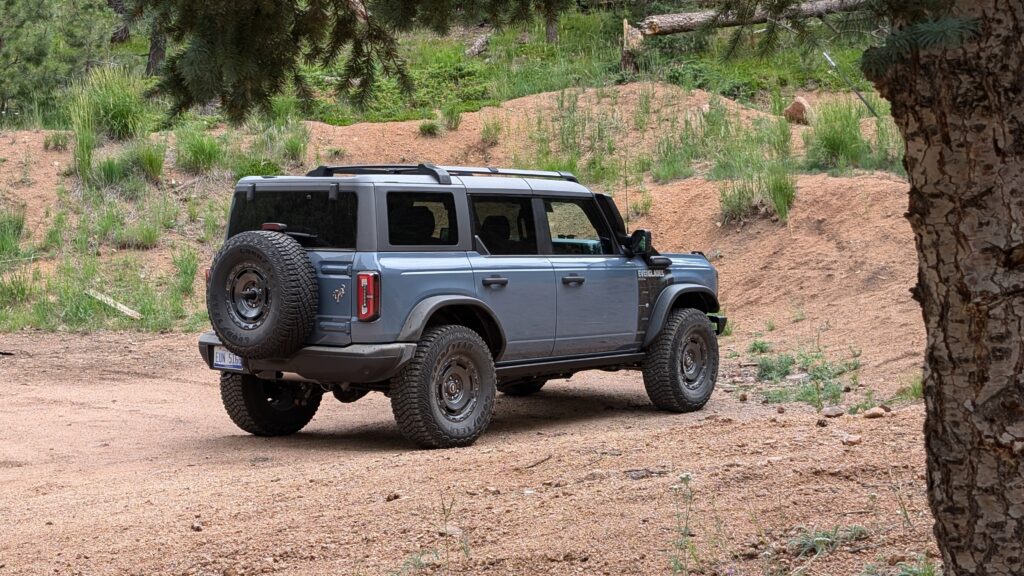
So how does the Bronco stack up to other vehicles in the class? Well, the Jeep Wrangler is really the only other direct competitor and in my opinion, the Ford is better to drive every day. When it comes to off-roading, a person’s particular goals and endeavors will dictate which is a better fit.
For the time being, the Bronco stands up well to its name. It’s sincerely very rugged and outfitted to the hilt to do things that very few vehicles on the road today can accomplish. At $58,770 it’s very expensive though so it’s tough to recommend to anyone who doesn’t already make off-roading a part of their lifestyle. You’re paying for the off-road capability, not the interior comfort, so use it. Otherwise, buy a Bronco Sport.
I say that because a Bronco Sport probably fits the actual lifestyle habits of more buyers than the Bronco itself does. The Sport gets better fuel economy, is more comfortable, quieter, more nimble, and also won’t ever require the buyer to shell out the cash it takes to buy four new 35-inch tires.
Owning a Bronco comes with caveats just the same way that owning an Irish Wolfhound does. Just the same way that you wouldn’t want that dog to live its life in an apartment, we hope Bronco owners won’t shackle their SUVs to a life on tarmac alone.



